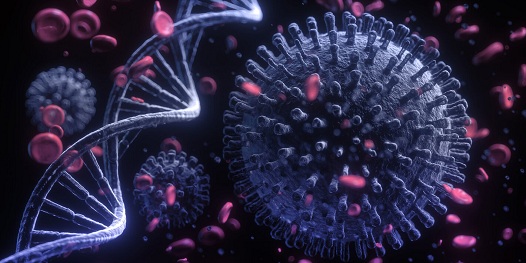New Dangerous Second Generation Variant Discovered In Brazil That Could Wreak Havoc Globally!
Source: Second-Generation-SARS-CoV-2-Variants Mar 15, 2021 4 years, 1 month, 1 week, 3 days, 16 hours, 45 minutes ago
Brazilian researchers have discovered a new so called
second generation SARS-CoV-2 variant with a variety of mutations and deletions never seen before that appeared on another variant from the B1.1.33 lineage.

This new second generation variant of the novel coronavirus, SARS-CoV-2, has been detected in several regions of Brazil, the Ministry of Science and Technology's National Laboratory for Scientific Computing (LNCC) said last Friday.
The WHO and U.S. CDC was informed of the development and according to sources among Brazil health authorities, a media blanket was ordered but Chinese researchers in Brazil helping out with the Chinese vaccine programs leaked the development to authorities in China and also Chinese media, as a result the China’s Xin Hua news media broke the story on Saturday.
https://www.xinhuanet.com/english/2021-03/13/c_139808132.htm
At the moment, Brazil is going through a surge of COVID-19 infections as a result of the more potent SARS-CoV-2 coronavirus variant P.1 which is not only more infectious and transmissible but also more deadly plus it evades the immune responses and even vaccines.
Brazil’s healthcare system is nearing collapse due to a rise in cases generated by the P.1 strain that emerged in northern Brazil's state of Amazonas in November 2020.
A detailed study carried out in 39 municipalities of five Brazilian states "led to the identification of a possible new variant of SARS-CoV-2 originating from variant B.1.1.33 that had circulated in Brazil," the laboratory said on the 12
th of March in a report to the WHO and U.S. CDC.
According to Brazilian researchers this latest variant contains a dangerous mutation that could "complicate the planning of new strategies to control COVID-19," the laboratory warned. There are also numerous other worrisome mutations and deletions found on this variant.
This second generation variant which is now also a variant of interest displayed four non-synonymous lineage-defining mutations (NSP3:A1711V, NSP6:F36L, S:E484K, and NS7b:E33A) and was designated as
lineage N.9 There are also other mutations and deletions on it being discovered.
The laboratory results were reported in the international coronavirus genome database GISAID but full details of the mutations and deletions were not disclosed.
This is not the first second generation variant to emerge. About 2 weeks ago, Brazilian scientists found a few variants had emerge from the B.1.1.28 variant distinguished by five single-nucleotide variants (SNVs): C100U, C28253U, G28628U, G28975U, and C29754U. The SNV G23012A (E484K), in the receptor-binding domain of Spike protein was widely spread across the samples. This mutation was previously associated with escape from neutralizing antibodies against SARS-CoV-2. This novel lineage apparently emerged in late July being first detected by the United States in late October and still mainly restricted to the capital of the state. However, as observed for other strains it can be rapidly spread in the state.
https://www.med
rxiv.org/content/10.1101/2020.12.23.20248598v1
Despite also reporting this to the WHO and the U.S.CDC, Brazilian authorities were asked to downplay these emerging second generation strains while the vaccination programs were underway across the world.
The Brazilian lab however warned, "The growing need for effective genomic surveillance to be able to identify potential viral mutations early is clear, thus helping to improve current vaccines against COVID-19.”
The laboratory researchers have prepared a detailed study findings of the new second generation variant including the details of the mutations. However this is merely a preliminary study as more mutations and deletions are being uncovered.
https://www.biorxiv.org/content/10.1101/2021.03.12.434969v1
For more about
Second-Generation-SARS-CoV-2-Variants emerging, keep on logging to Thailand Medical News.
